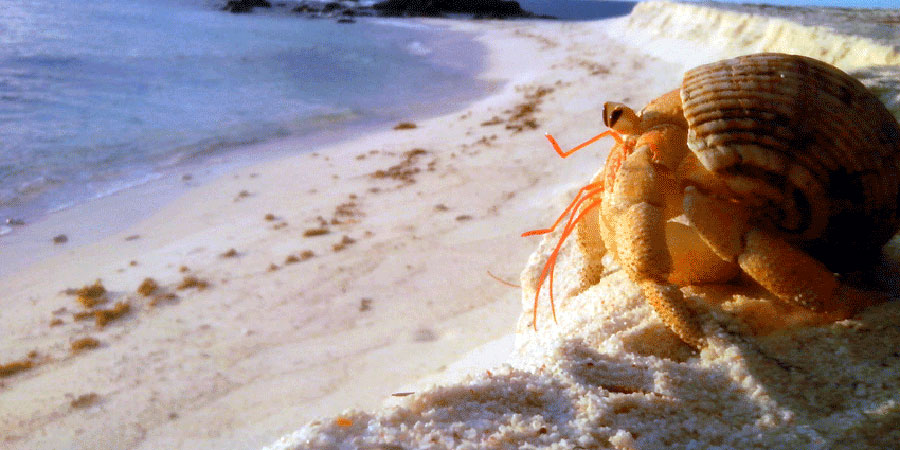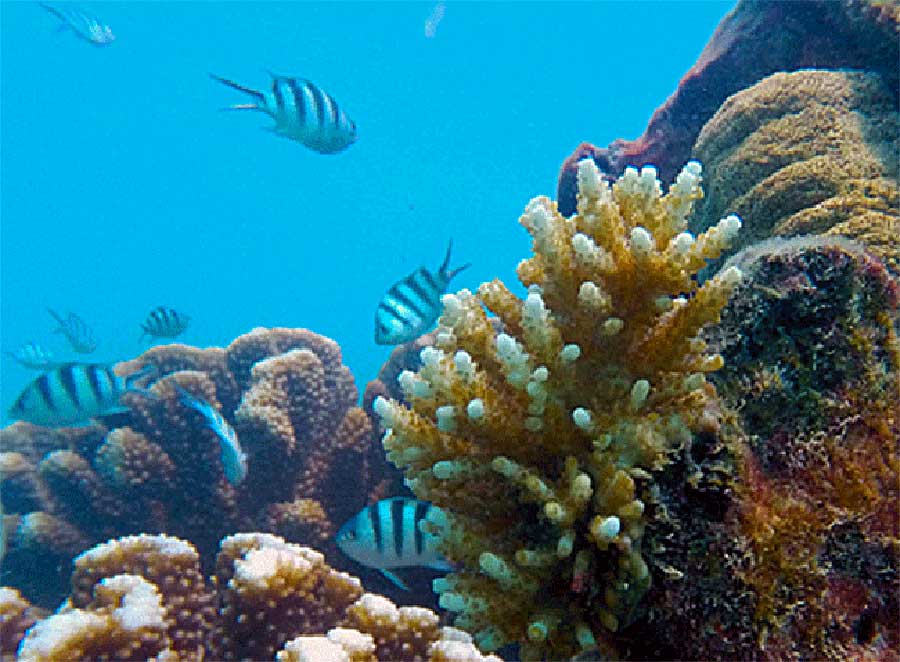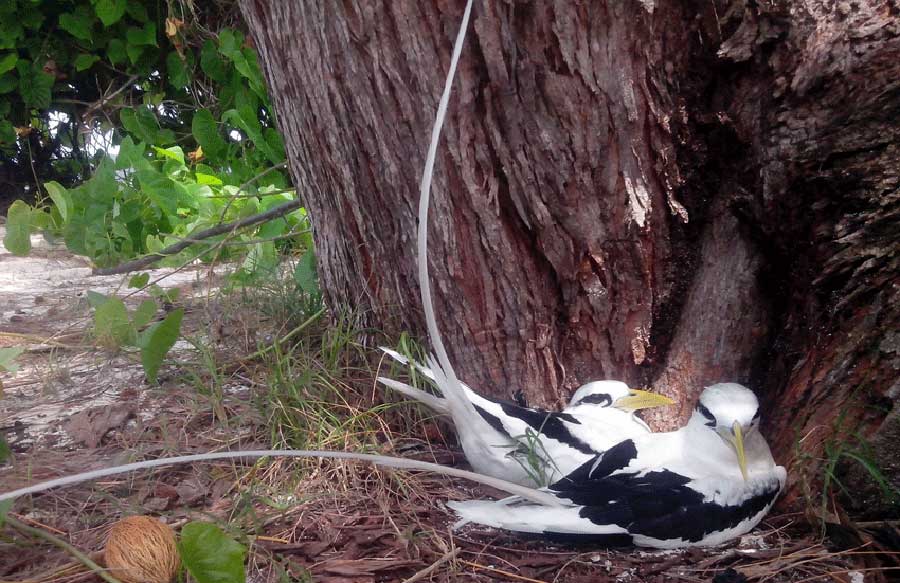
When I arrived on Cousin Island Special Reserve, I had the feeling I had landed on a lost island. The vast beaches of fine white sand, the bright sun, the abundant fauna and flora and just a handful of people living and working on the island.
The sky is crammed with birds. I saw fairy terns, white-tailed tropic birds, noddys, frigates, tropic shearwater, wedge-tailed shearwater and bridled terns. You can also see one of the biggest flying mammals, the fruit bat. What an amazing creature!
The earth, covered by luxuriant vegetation providing an ecological niche for a lot of different species of all sizes like the Bronze Gecko, Seychelles Warbler and the Giant Aldabra.
Cousin Island is a magical place that leaves you in awe of the beauty of nature. In the water there are lots of wonderful corals, fishes, rays, sharks and the hawksbills turtles.

One of my tasks involves going into the forest to observe and record bird behavior. Breeding attempts, conflicts, territory changes, disappearance or death are recorded allowing us to monitor any changes in the populations’ numbers. I recently discovered a new juvenile that we tagged and ringed. I also discovered two new nests. One was actually a Magpie Robin taking some old leaves of Casuarina and when I followed it, I found the nest “under construction”. It warms up my heart to see that the Magpie Robin can breed in Cousin thanks to conservation work.
Native from Reunion Island, the white tailed tropicbird or “payanke” in creole, is familiar to me. On Cousin Island it is a real pleasure to see for the first time its natural way of life. Unfortunately, in Reunion Island this bird cannot lay on the floor because of human activity.

Another task I have had the privilege of being involved in is Hawksbill turtle monitoring. Cousin Island, probably the most important breeding site in the western Indian Ocean for Hawksbill turtles, is the place to work in. We patrol the beaches every day to determine whether and where the turtles have built a nest and collect all relevant data relating to the turtle and her eggs.
One day during my patrols, in the rain, I saw two tracks which led me to a big turtle of 92 cm. I counted the eggs despite the lightening, while two other turtles emerged from the sea. I saw this turtle again two weeks later and recognized her right away. I confirmed by her tag that she was indeed the same turtle. What an unforgettable experience that was!
When the breeding time slowed down it only meant we would see more hatchlings make their way to sea. At some point later in the season, we have to do excavations which means digging nests, counting the eggs’ shells and determine the development stages. We sometimes find some dead baby turtles but sometimes we find them still alive and help them along their way to the sea.
It has been a real personal satisfaction to help in the preservation of the wildlife on Cousin Island. Being a volunteer is sometimes very difficult but you learn so much and when you see a new turtle or hatchling or a new chick, the effort is instantly payed back.
Pauline Gaud

